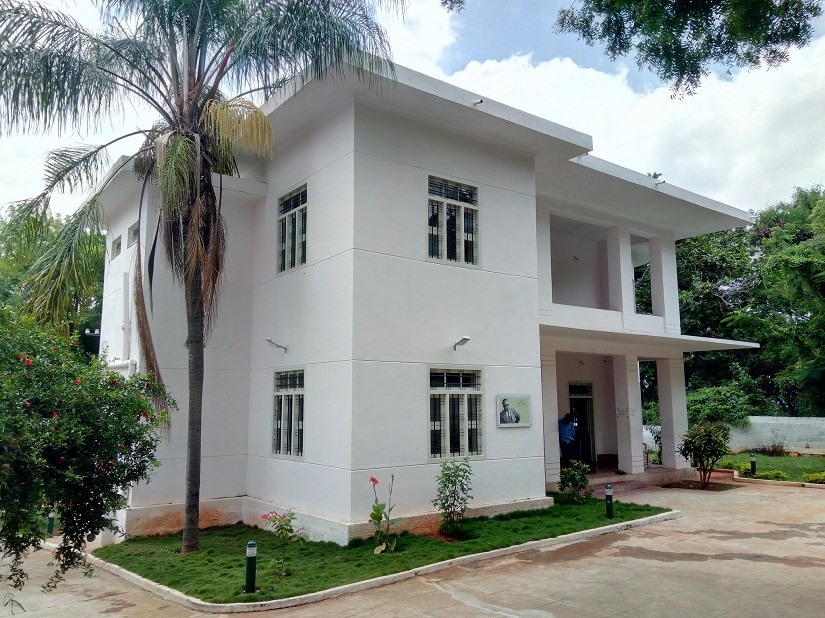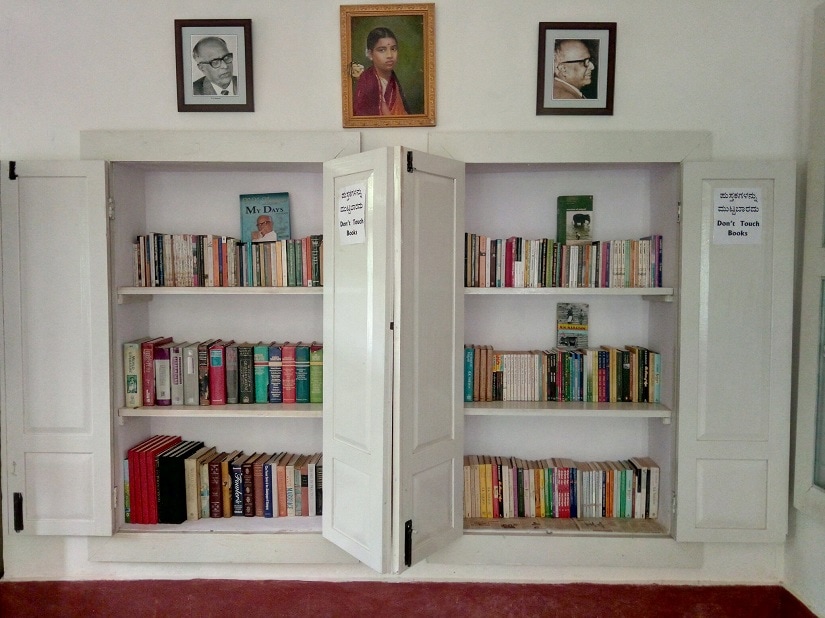It was almost six weeks before I reached Mysore that I got to know of RK Narayan’s house, that is now a museum. Missing a visit to this house while being in the city, would have been akin to skipping Shivaji Park in Mumbai despite being an aspiring cricketer. To many, RK Narayan is to Indian English writing what Sachin Tendulkar is to cricket, or maybe even more. And that he is no longer around, does not change that in anyway. His words will stay on forever, through the web of stories he spun in the fictional South Indian town of Malgudi. As a teenager growing up in a rough neighbourhood in Navi Mumbai (or New Bombay as it was then known), Malgudi would quite often suck me in with its sublime pleasures. It was my mother who brought these books for me from the Central Railway Library at VT Railway Station (now called CST). Swami and friends, The English Teacher, The Man Eater of Malgudi, Waiting for the Mahatma…the list goes on. Malgudi was once such an important part of my life that I believed it really existed, despite knowing well that it was an imaginary town. Many yearned for Shangri-La, but all I wanted to be at, was Malgudi. Then came a phase when I realised that Malgudi was not a place, but it lay hidden in the corners of the many places I visited. I could see it in the moss-covered boundary walls of my ancestral town of Udupi. Sometimes I spotted it in the tea shops in towns across Kerala. And despite my reading list having broadened, Malgudi continued to stay with me, somehow. I had heard that the writer’s house in the upper middle class neighbourhood of Yadavagiri in Mysore was quite minimalistic. That even an enthusiast like me would find it difficult to spend more than an hour there, was the verdict. [caption id=“attachment_3766589” align=“alignnone” width=“825”]
 RK Narayan’s home in Mysore, which is now a museum. All photos courtesy Sachin Bhandary[/caption] The first thing I noticed after the plaque that read ‘RK Narayan’s house’, was the rather humble cello-taped paper printout suggesting rather than announcing a ‘Welcome’, both in English and Kannada. That, more or less, set the tone for the tour. Always gentle, but also always functional. Apart from myself, the only people to walk in that Sunday morning were a family of three. The lady gave me a confused look as I was reading the oversized articles about Narayan. Probably she found it intriguing that I would be so absorbed by plain words. Not long ago this house was in ruins and its future was quite uncertain. Narayan’s grand children had decided to redevelop the house and had engaged a developer who was tearing down the house down step-by-step. It was only when a local newspaper started a campaign that the Mysore Urban Development authority stepped in and announced that the house was a heritage building. After negotiations with the family, the house changed hands and led the way for this restoration. That the city commissioner took a personal interest in this cause, helped. Also, the brief for the architect was to restore the building the way it was when Narayan lived here for almost two decades. He had then moved to Chennai in his nineties and continued to live there till his death in 2001. Even the kitchen, dining room, prayer room and bathroom are as simple as they can get, all of them with whitewashed walls. For a fan like me, there was a certain kind of thrill in realising that I was walking on the same red oxide floor that once my role model had. The house does, however, do a good job of listing his achievements and awards, like the Padma Bhushan and Padma Vibhushan which are on display in glass cases, and so are his clothes. [caption id=“attachment_3766591” align=“alignnone” width=“825”]
 Inside RK Narayan’s home[/caption]
Aspiring writer Sachin Bhandary visits his childhood inspiration, RK Narayan’s home-turned-museum in Mysore, and gets pulled deep into the delightfully simple world of Malgudi.
Advertisement
End of Article


)



